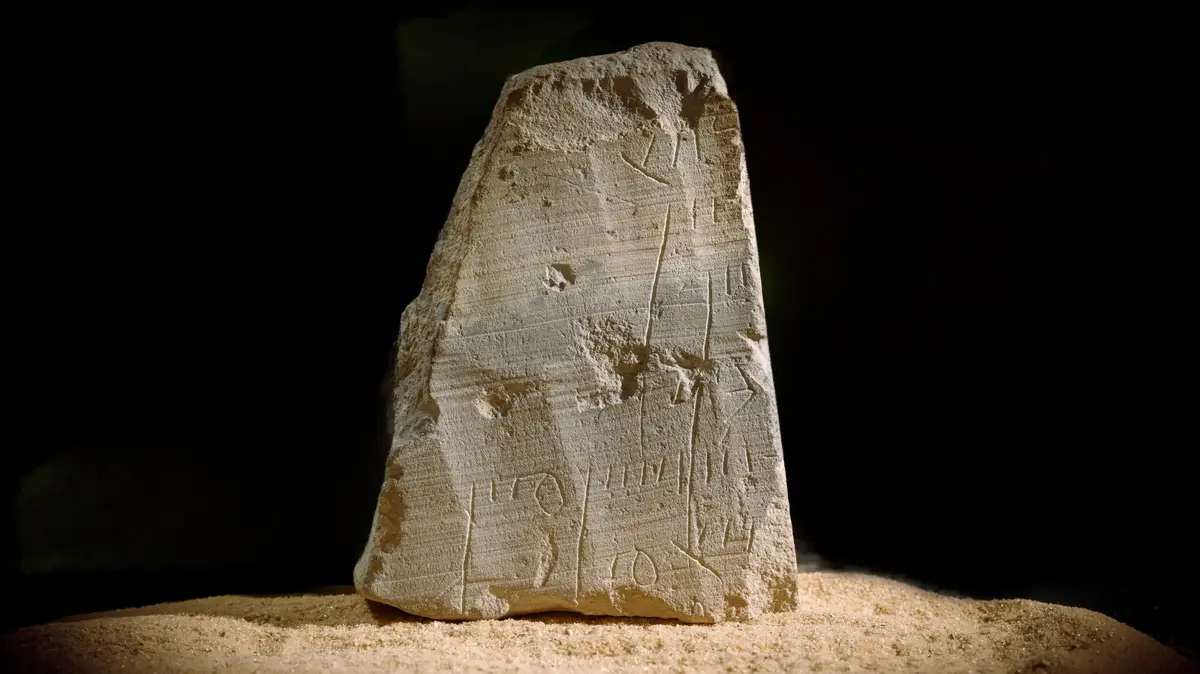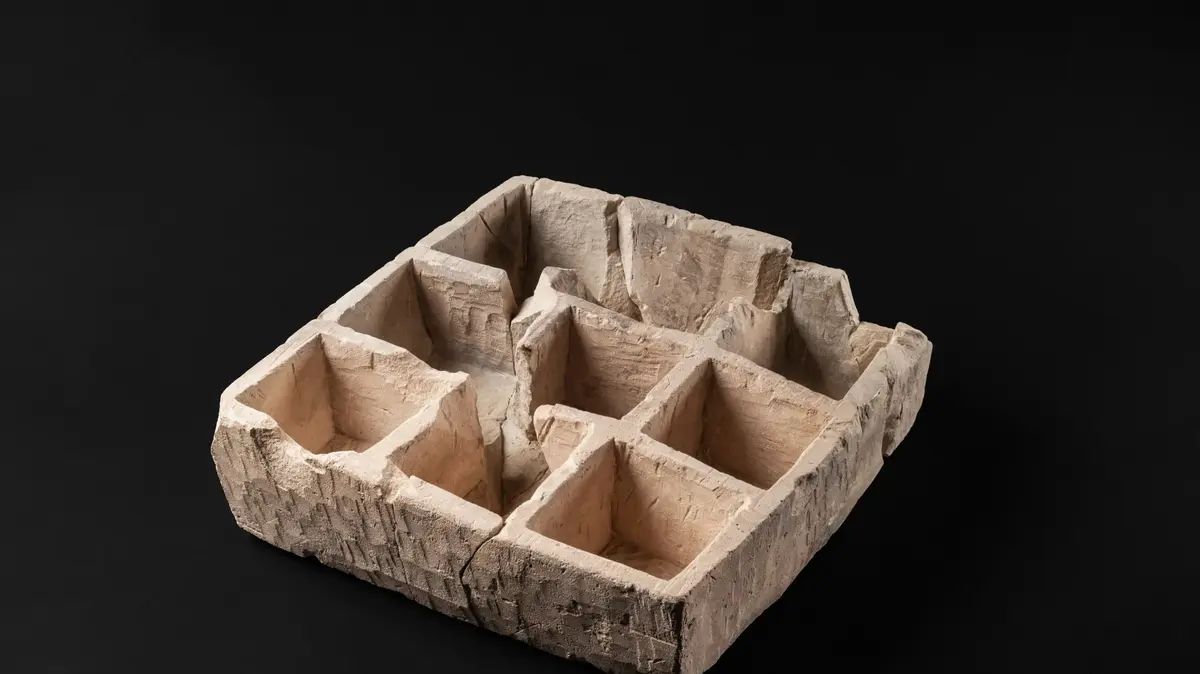Stone tablet bearing an economic inscription from 2000,<> years ago in Jerusalem (Photo: Assaf Peri, City of David)
Who was "Shimon" whose name appears in a 2,000-year-old Hebrew inscription? Excavations conducted by the Israel Antiquities Authority in the City of David in the Jerusalem Walls National Park, funded by Elad (El City of David), revealed a small fragment of a stone slab bearing an inscription that was used for economic purposes.
About seven lines were preserved from the inscription, in which a number of letters and fragments of Hebrew names were identified, along with numbers. Thus, for example, in one line appears the end of the name "Shimon" with the letter "Mem" next to it, and in other lines there are number markings. Some of the numbers are preceded by their economic value, denoted by the letter "Mem" as an abbreviation for "ma'ot", or with the letter Rish as an abbreviation for "quarters".
In an article recently published in the journal Atiqot, Nachshon Zenton, excavation director from the Israel Antiquities Authority, and his research partner, Prof. Esther Eshel of Bar-Ilan University, noted that to date, four other similar Hebrew inscriptions have been documented in the study, in Jerusalem and Beit Shemesh, indicating names and numbers engraved on similar stone tablets, also from the Early Roman period, but this is the first inscription uncovered to date within the city limits of Jerusalem.
According to the researchers, "The inscription was engraved in a sharp vessel on a slab made of soft limestone. The stone slab was probably originally used as a covering slab for an ossuary (small stone coffin), an item that was common in Jerusalem and Judea during the Early Roman period (37 BCE to 70 CE). For the most part, ossuaries are usually found in graves outside the city, but there is also their presence within the city limits – perhaps as part of a local workshop or a shop that sold them."
"The inscription was engraved in a sharp vessel on a slab made of soft limestone." The economic address from the City of David (Photo: Israel Antiquities Authority, Eliyahu Yanai, City of David)
Stone weights discovered on the pilgrims' route (Photo: Israel Antiquities Authority, Tomer Avital)
The intriguing find was discovered in Jerusalem's lower city square (Photo: Israel Antiquities Authority, Eliyahu Yanai, City of David)
The inscription dates from the end of the Second Temple period
The intriguing find was discovered within Jerusalem's lower city square, located along the route of the Pilgrims' Road. The road, which stretches for about 600 meters, connected the city gate and the Siloam Pool area in the south of the City of David with the gates of the Temple Mount and the Second Temple, and in fact served as Jerusalem's main longitudinal street at that time. The finding joins a series of other finds discovered at the site, such as weights and a table for measuring volumes. These testify to the economic character of the region.
The stone slab engraved with the inscription was discovered in the trench of a previous excavation that took place at the site. This canal was excavated at the end of the 19th century by a pair of British archaeologists, Bliss and Dickie, who dug trenches and shafts along the terraced street. Although the inscription was found outside its original archaeological context, thanks to the type of writing, the type of stone slab on which the inscription was engraved, and parallels from other inscriptions, this inscription can be dated to the Early Roman period - the end of the Second Temple period.
Reconstruction of the Pilgrims' Road during the Second Temple period (Photo: Israel Antiquities Authority, Shalom Kevler, City of David)
Stone table for measuring volumes discovered on the Pilgrims' Road (Photo: Israel Antiquities Authority, Kobi Harati, City of David)
Archaeological excavation on the Pilgrims' Road (Photo: Israel Antiquities Authority, Kobi Harati, City of David)
"A rare and joyful thing"
According to the researchers, "The daily life of the residents of Jerusalem who lived here 2000,<> years ago is expressed in the ordinary and simple form of everyday objects. Ostensibly, the list of names and numbers is not such an exciting thing, but to think that just like today, receipts were used in the past for commercial purposes and such receipts came into our hands, is a rare and joyous thing that allows a glimpse into the ordinary and simple life that took place in the Temple City of Jerusalem."
According to Zenton and Prof. Eshel, "The combination of the architectural and tangible space of the square's enormous paving stones that were preserved at the site and the small finds uncovered there, such as the measuring table and the new inscription, makes it possible to reconstruct parts of the archaeological puzzle in one of the centers of vibrant life that existed in ancient Jerusalem. Every piece of information – and certainly an ancient inscription – adds a new and fascinating shade to the history of the city."
- tourism
- news
Tags
- Archaeology
- City of David
- Jerusalem















